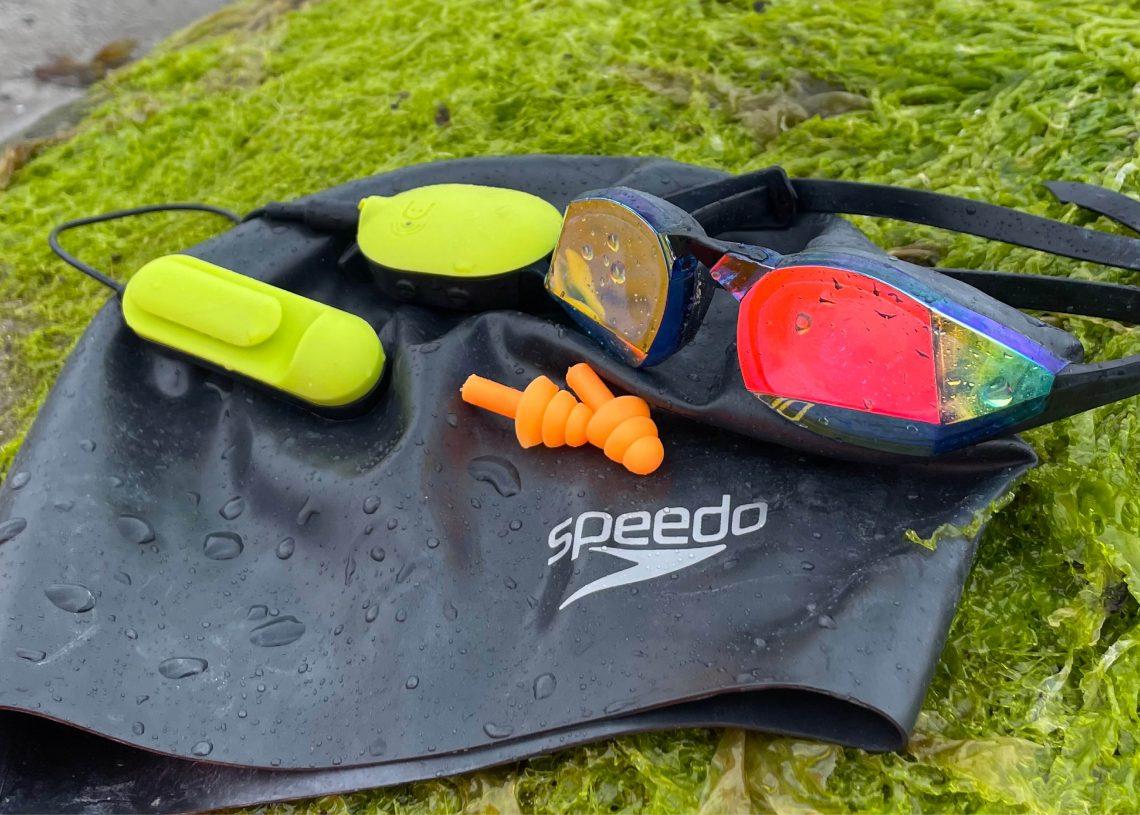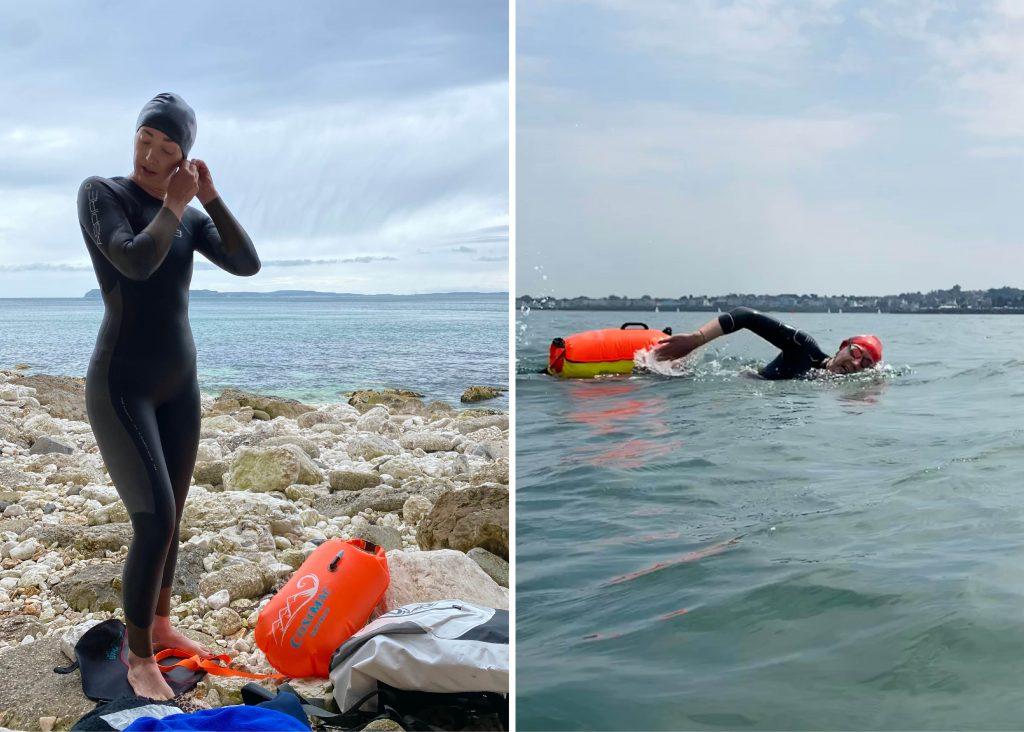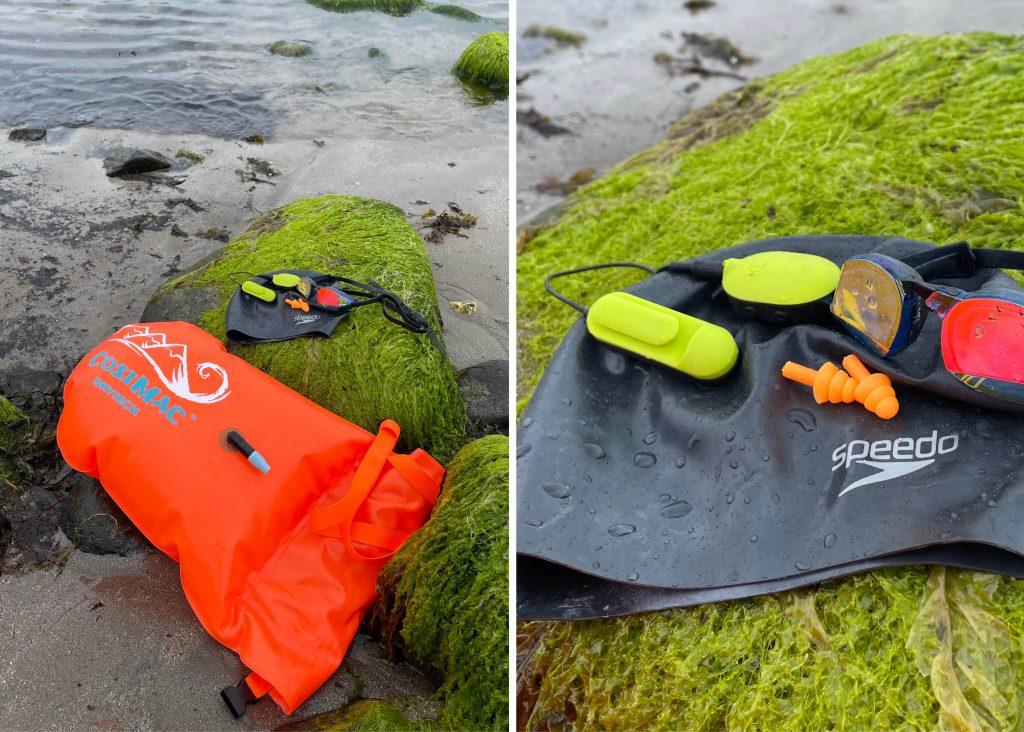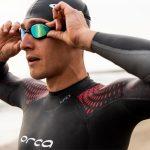
Worth the investment? The Platysens Marlin
In the first of our series exploring outdoor swimming investment pieces, first-time marathon swimmer Helen Armstrong (@thewanderingselkie) shares her experience of the gadget that kept her motivated when strong currents doubled her time in the water.
- Helen is reviewing The Platysens Marlin ($150), a bone conduction headset that combines GPS motion sensors and voice technology to provide realtime audio feedback to swimmers even under water.
In 2023 I embarked on my first marathon distance swim: a 10km swim from Orlock to Helens Bay in County Down. For the first hour and a half, we barely covered any distance as we were swimming in strong currents against the tide. In hindsight, our swim should have started later after the tide had turned.
I had anticipated the swim taking approximately three to three and a half hours; six hours later we were just making it to the final 1km. Three and a half hours is what I had physically and mentally prepared myself for. To finish a swim that we estimated to be the equivalent of 50% longer due to the currents, I had to dig deep to keep myself moving through the physical pain and fatigue, until my feet touched the sand at Helens Bay.
I’ve had my Platysens Marlin for a couple of years and it’s an incredible piece of kit, which provides real-time audio feedback to swimmers. This means when you’re swimming, you can be updated with total distance covered, your split time per 100m, stroke rate and more. The audio transmission works via bone conduction, which allows for clear and crisp audio feedback even under water. I use it in pool sessions, as well as in open water. The device links to an app, which records your training history; no need to write down a log of your session and times.
I find the metre particularly useful when I’m training for longer distance open water swims. No more guessing the distance covered; instead you get a live stream, an accurate report of the total distance and your split times.

“Is this thing on?”
During the first leg of this 10km swim, though, I thought my Marlin had failed me! I felt like I was swimming at a good pace. I felt strong; I felt good. And yet it was telling me split times of over five mins per 100m. My normal split would average one minute 45 per 100m. Questioning the data led me to shift my focus to look for markers. When I paid attention to the headland, I realised that the audio feedback with the snail’s pace of distance covered was accurate.
For me, it’s a no-brainer to have a swim tracker that is attached to the top of your head, so that when you’re swimming long distance front crawl, the GPS tracker is constantly above the water. No glitches like you get even with the best training watches. And with the real-time audio feedback, there’s no need to stop to check your progress like you might do with a watch.
This was the toughest endurance challenge I’ve ever taken on – way more challenging than when I climbed Mount Kilimanjaro! The mental resilience it takes to be a long distance open water swimmer is phenomenal; I’ve got so much respect for you all! Especially for those swimmers who take on Ice Miles, Channel swims and even longer marathon swims.
Enough time has passed since my first marathon swim last summer and my brain has done that wonderful thing of dulling the negative memories, focusing on how good it felt to finish. Now, I can start thinking about what’s next. Will the Platysens Marlin be joining me on my next long distance swimming challenge? Absolutely.

Follow Helen Armstrong on Instagram @thewanderingselkie. This article contains affiliate links.








